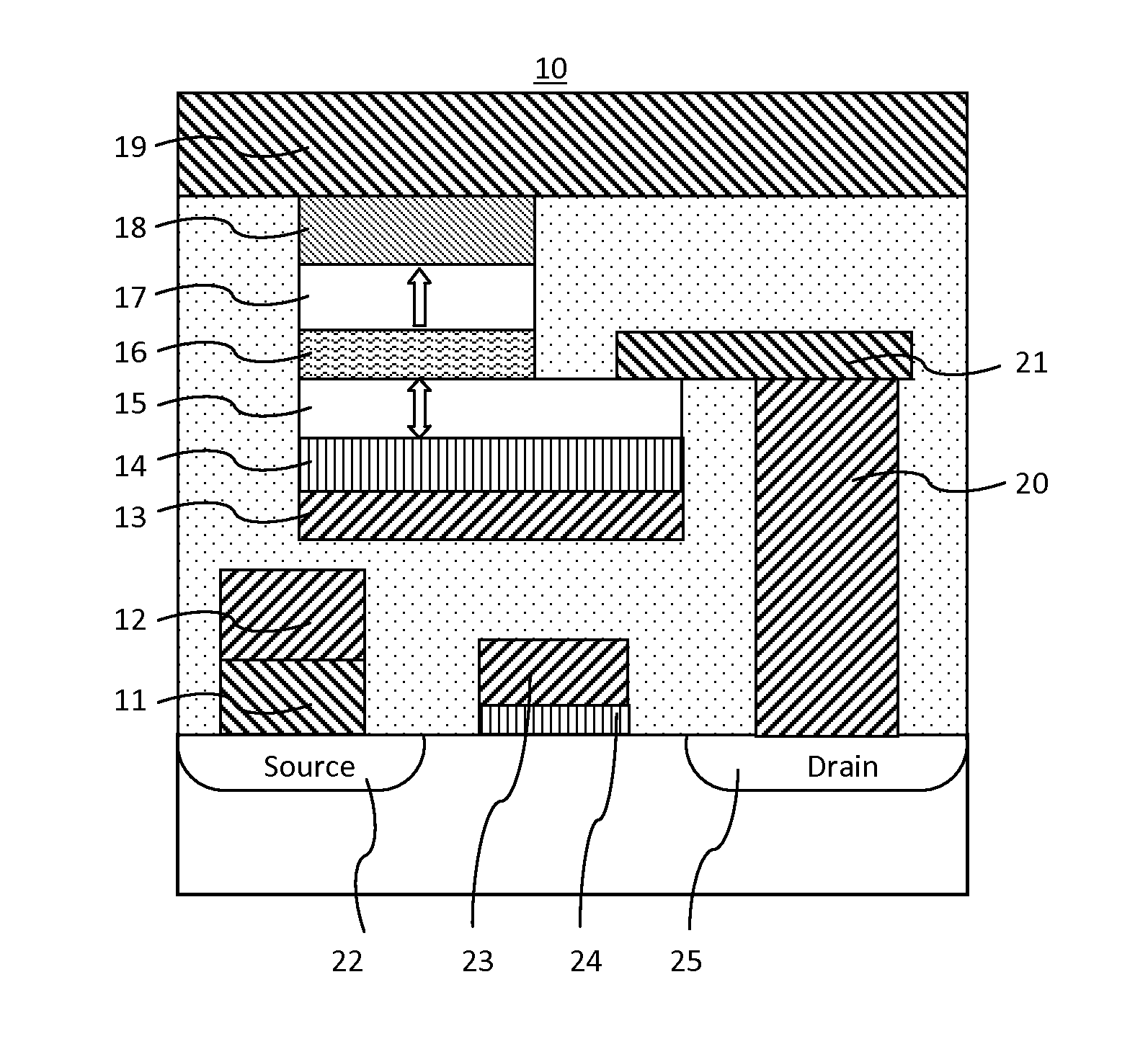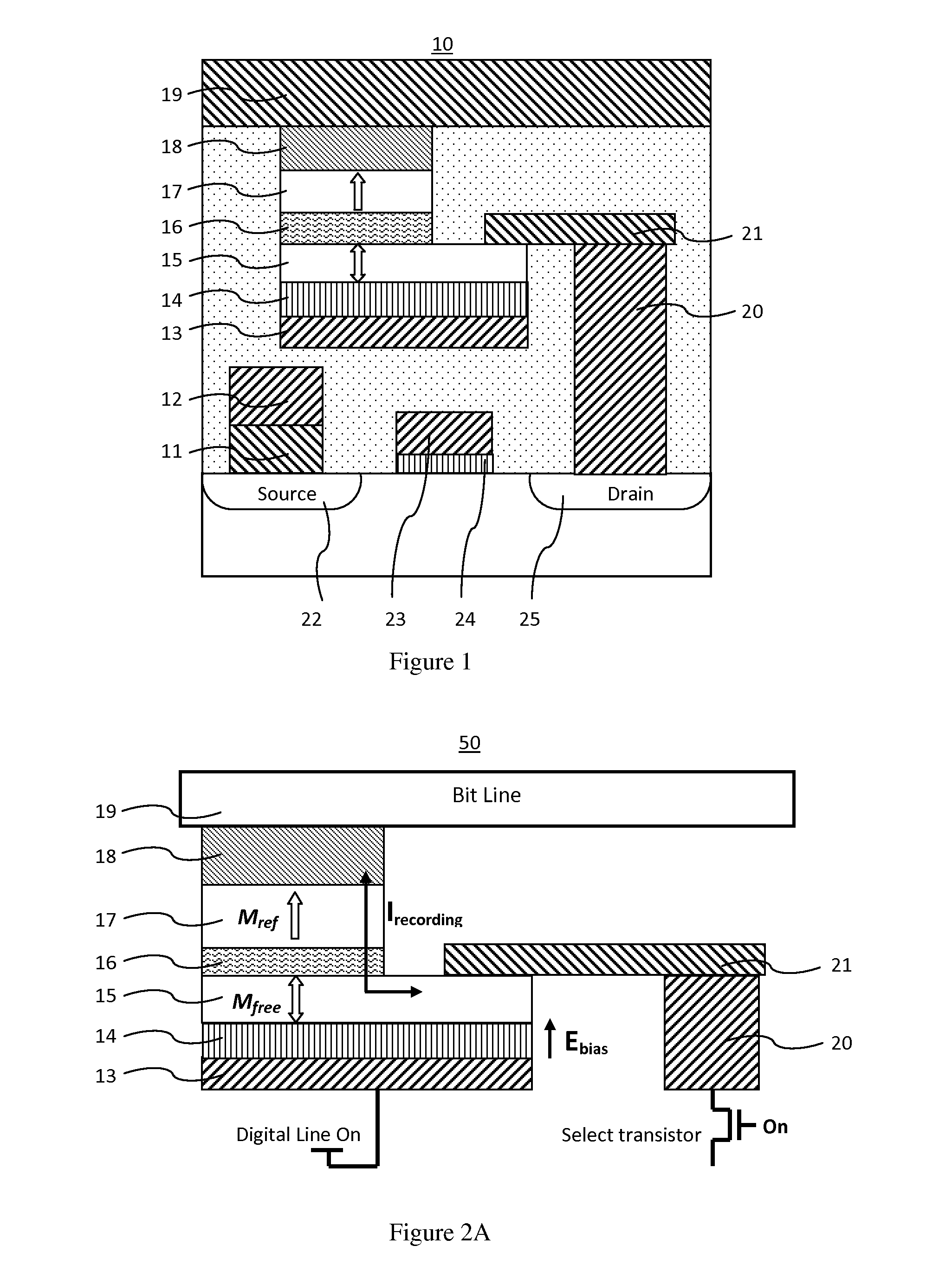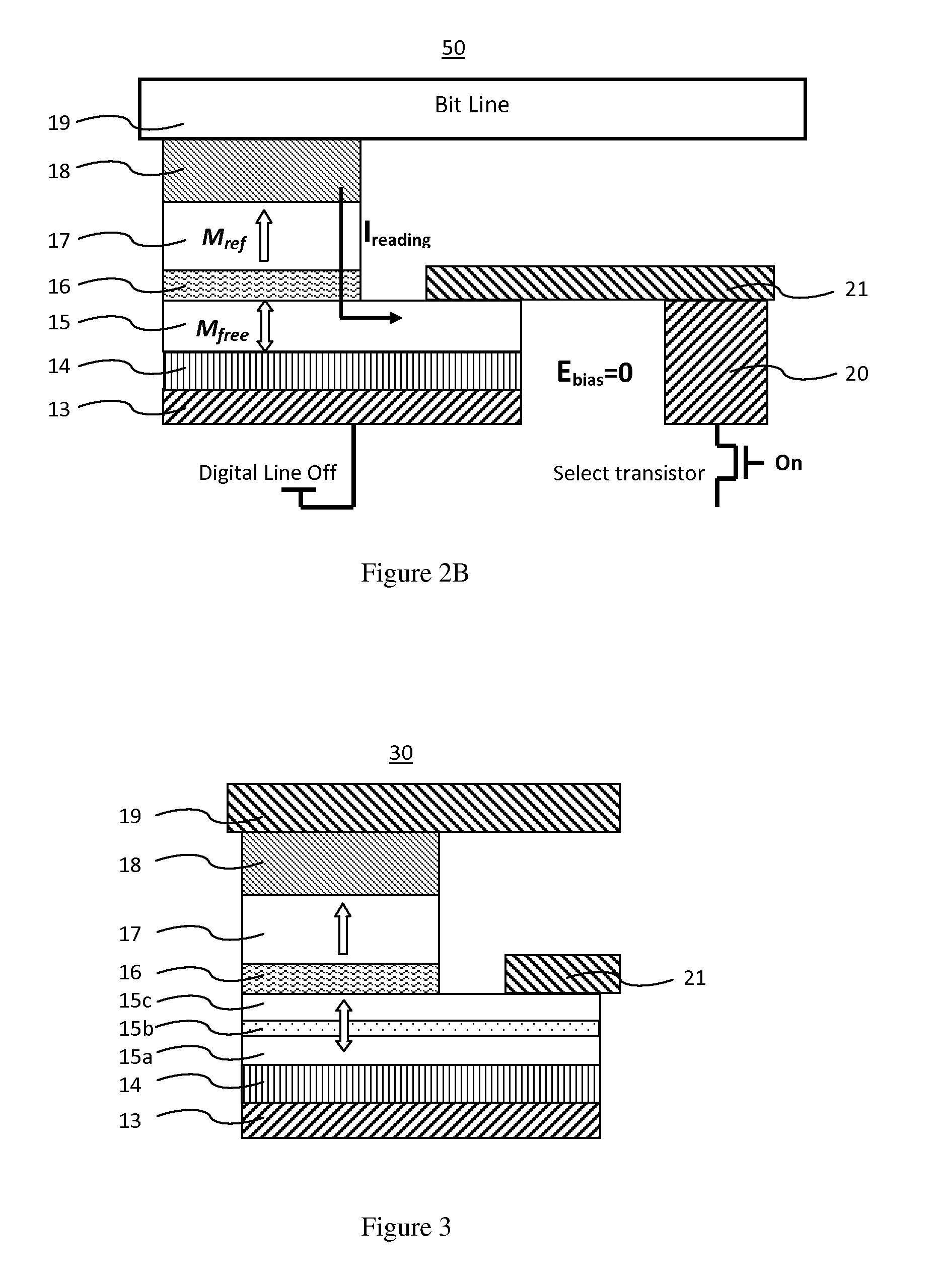Spin transfer MRAM element having a voltage bias control
- Summary
- Abstract
- Description
- Claims
- Application Information
AI Technical Summary
Benefits of technology
Problems solved by technology
Method used
Image
Examples
first embodiment
[0052]FIG. 1 is an exemplary cross-section of a magnetoresistive memory cell 10 in a perpendicular STT-MRAM array according to the first embodiment. The magnetoresistive memory cell 10 is configured by a bit line 19, an upper electrode 18, a reference layer 17, a tunnel barrier layer 16, a recording layer 15, an anisotropy modification layer 14, a voltage bias layer 13, and a select transistor comprising an interconnect layer 12, a source contact 11, drain contact 20, a middle electrode 21, source region 22, a gate insulating film 23, a gate electrode 24 and a drain region 25.
[0053]FIG. 2A illustrates a magnetoresistive element 50 in a recording mode. A circuitry, which is not shown here, is coupled to the bit line for providing a bi-directional recording current between the upper electrode and the middle electrode connecting to the select transistor, and is coupled to the bias layer or digital line for providing a positive voltage on the bias layer in a recording mode. The magnetor...
second embodiment
[0065]FIG. 7 is an exemplary cross-section of a magnetoresistive memory cell 10 in a planar STT-MRAM array according to the second embodiment. The magnetoresistive memory cell 10 is configured by a bit line 19, an upper electrode 18, a reference layer stack 17, a tunnel barrier layer 16, a recording layer 15, an anisotropy modification layer 14, a voltage bias layer 13, and a select transistor comprising an interconnect layer 12, a source contact 11, a middle electrode 21, drain contact 20, a source region 22, a gate insulating film 23, a gate electrode 24 and a drain region 25.
[0066]FIG. 8A illustrates a magnetoresistive element 50 in a recording mode. A circuitry, which is not shown here, is coupled to the bit line for providing a bi-directional recording current between the upper electrode and the middle electrode connecting to the select transistor, and is coupled to the bias layer or digital line for providing a negative voltage on the bias layer in a recording mode. The magnet...
PUM
 Login to View More
Login to View More Abstract
Description
Claims
Application Information
 Login to View More
Login to View More - R&D
- Intellectual Property
- Life Sciences
- Materials
- Tech Scout
- Unparalleled Data Quality
- Higher Quality Content
- 60% Fewer Hallucinations
Browse by: Latest US Patents, China's latest patents, Technical Efficacy Thesaurus, Application Domain, Technology Topic, Popular Technical Reports.
© 2025 PatSnap. All rights reserved.Legal|Privacy policy|Modern Slavery Act Transparency Statement|Sitemap|About US| Contact US: help@patsnap.com



